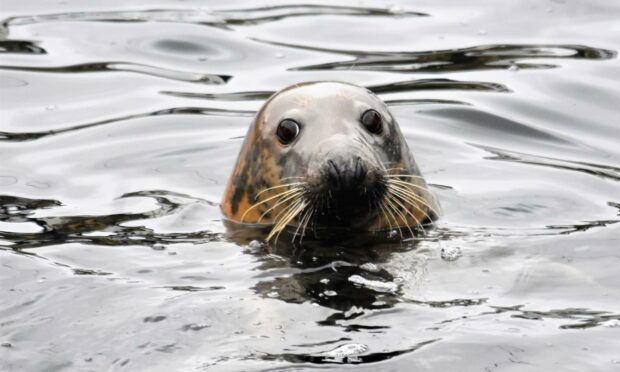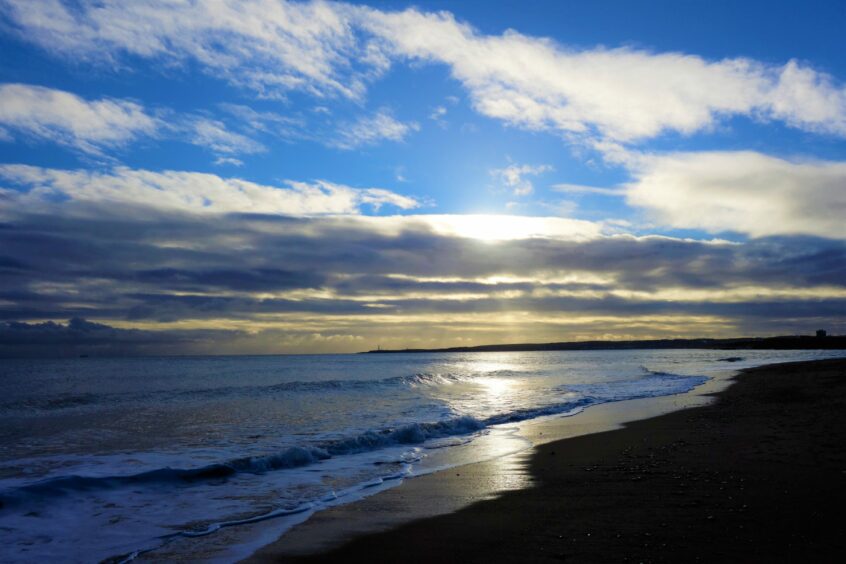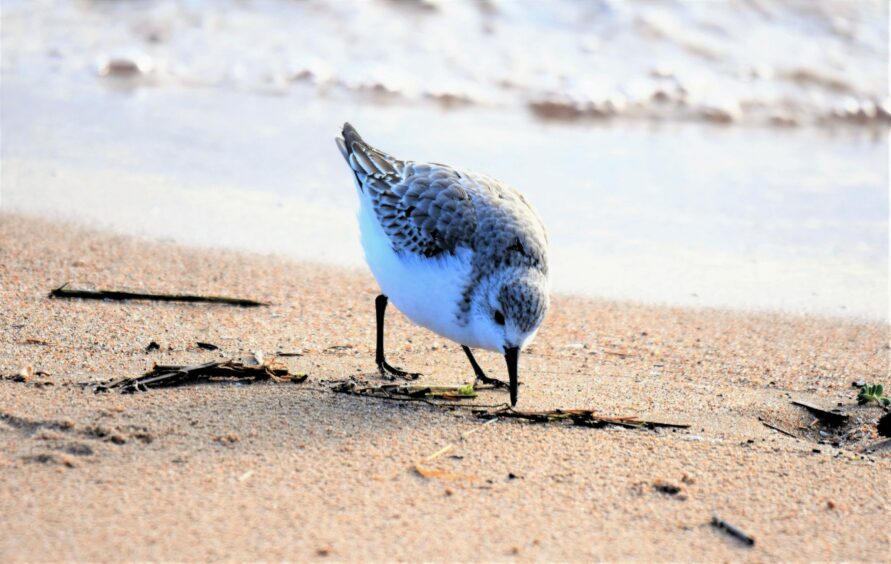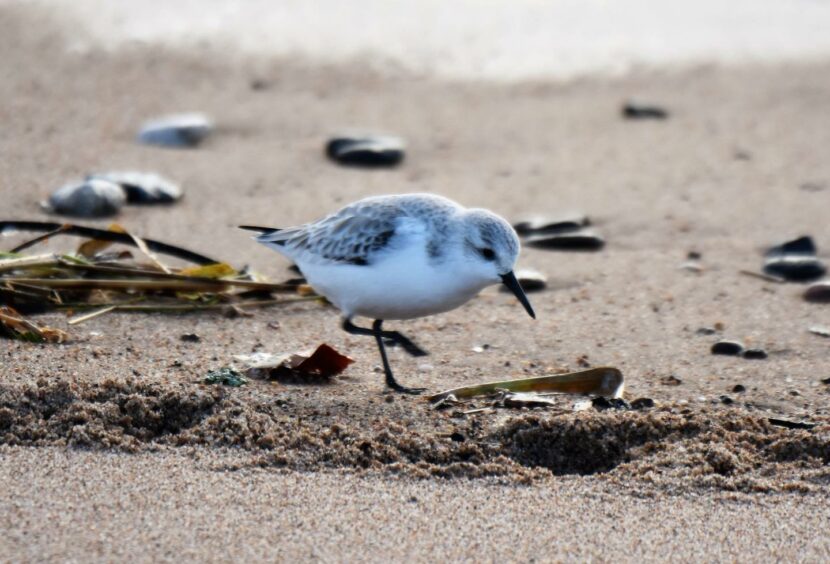The grey seal watched me with curious, dew-dappled eyes, before it disappeared in a swirl of water that ebbed in ever-diminishing silver-sparkled ripples.
In the background, across the mouth of the Don estuary, lay the skyline of Aberdeen where a small group of herring gulls tumbled in the sky.
It was a cold but calm winter’s day, and the seal soon reappeared again, but further away than before.
I suspect it had just entered the Don from the open sea through the narrow entrance channel of the river and was intending to use the sheltered confines of the estuary as a place to rest, or perhaps to hunt for flounders and trout.
Indeed, seals can venture a reasonable distance up the Don and are often glimpsed on the stretch opposite Seaton Park.
Fascinating place
I’ve always found Donmouth a fascinating place, and on each visit, I ponder how many salmon and sea trout pass through its narrow entrance each year on their way to the broader expanse of estuarine water beyond, before moving on upriver.
I left the estuary and struck northwards along the vast, sandy beach that stretches up to Balmedie and Newburgh.
By the water’s edge, a small group of pearly-plumaged sanderlings pattered past, deftly dodging the gentle surf with bursts of speed or short flutters in the air.
Sanderlings lack a hind toe, which is an adaptation that enables them to run quickly over sand, but it also makes them a bit unsteady when it is gusty, and they are sometimes prone to being inadvertently blown sideways.
Sanderlings are winter visitors to Scotland from the high Arctic.
The previous week, I had been at Largo Bay in east Fife where there was a proliferation of mollusc shells on the beach.
There were the half-shells of razor shells, surf clams, prickly cockles, otter shells and queen scallops, as well as the empty shells of whelks.
It was a wonderful cornucopia of the sea’s riches.
However, here on this beach north of Aberdeen, seashells were few and far between.
Could it be that the sheltered confines of the Firth of Forth is a more productive place for sediment living shellfish to thrive, compared to the open and exposed waters of Aberdeenshire?
Challenging
It was hard to be sure, but certainly the shallow seabed and surging seas off Aberdeen during a storm would be a challenging place for sand and mud living shellfish to live, given that they would be under continual threat of being scoured from their sedimental homes.
I enjoy pondering such natural conundrums, and it is entirely possible there is another reason for the paucity of shellfish on this Aberdeen beach.
After a mile or so, I turned on my heels back to Donmouth.
On returning to the estuary, I spotted a red-breasted merganser roll-dive out in the basin.
I scanned the water to see if the seal was there, but it had gone, either having ventured back out to sea or perhaps it was resting in a quiet backwater of the river.



